UDOIT Quick Start
UDOIT is a tool that quickly scans your online course materials within Canvas, identifies accessibility issues, and guides you through a streamlined process of making content accessible.
UDOIT is already enabled in the left navigation area for new Canvas courses, if you don't see it, you may need to enable UDOIT in the left navigation by following the steps below
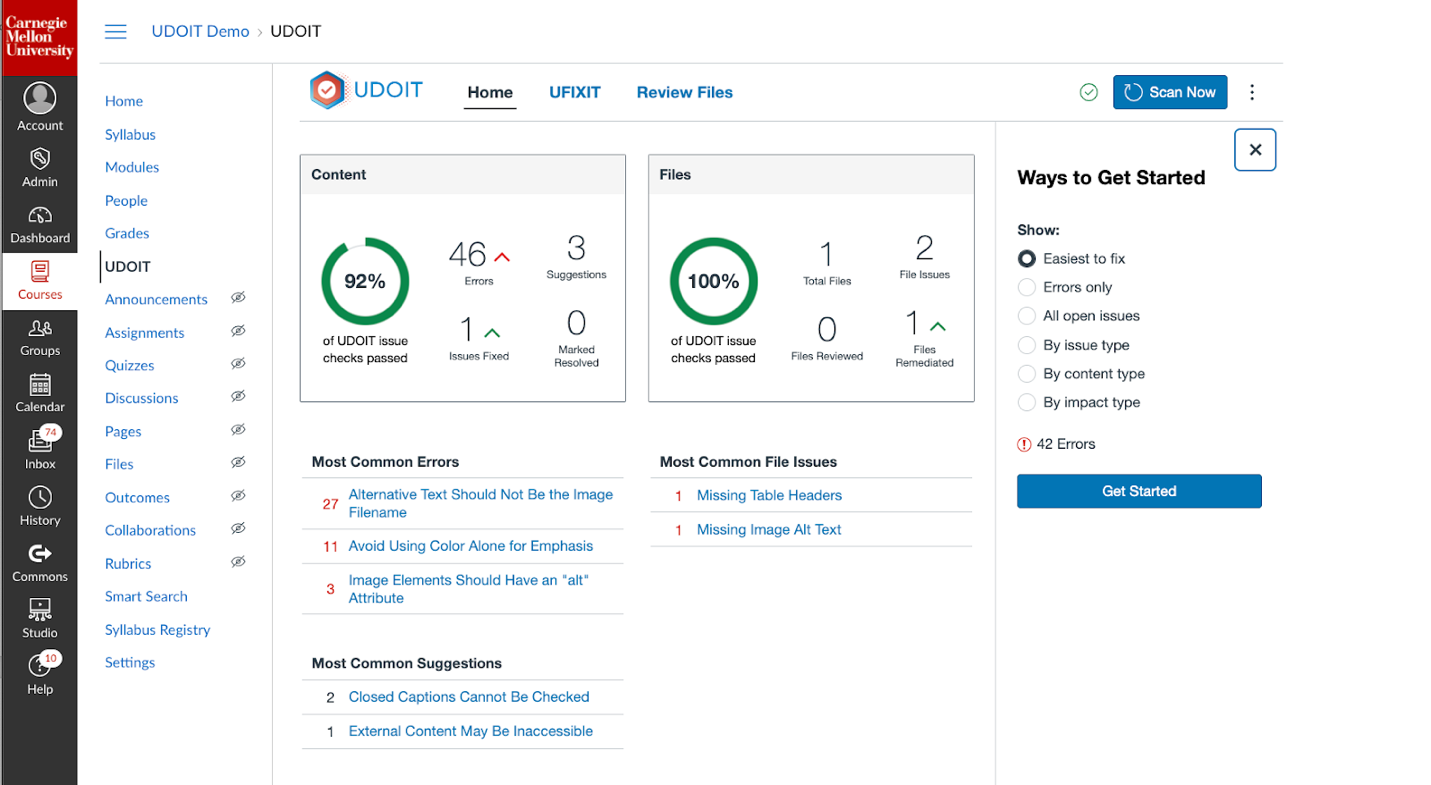
Enable UDOIT:
- From your course left navigation menu, click on Settings.
- Click the Navigation tab (among the top tabs on the Settings page).
- Find UDOIT listed among the items not yet enabled in your course.
- Do one of the following to enable UDOIT:
- Drag and drop UDOIT from the bottom set of items to the top set.
- Click the dots to the right of the UDOIT text to expand a menu and click Enable.
- Click the Save button at the bottom of the page to ensure changes to your course navigation appear.
- You should now see UDOIT in the list.
Using the UDOIT Interface
UDOIT Home Screen
This is where you will find a dashboard of the course accessibility score and issues, along with ways to get started, common errors, and suggestions. You can make a big impact by starting with the easiest issues to fix.
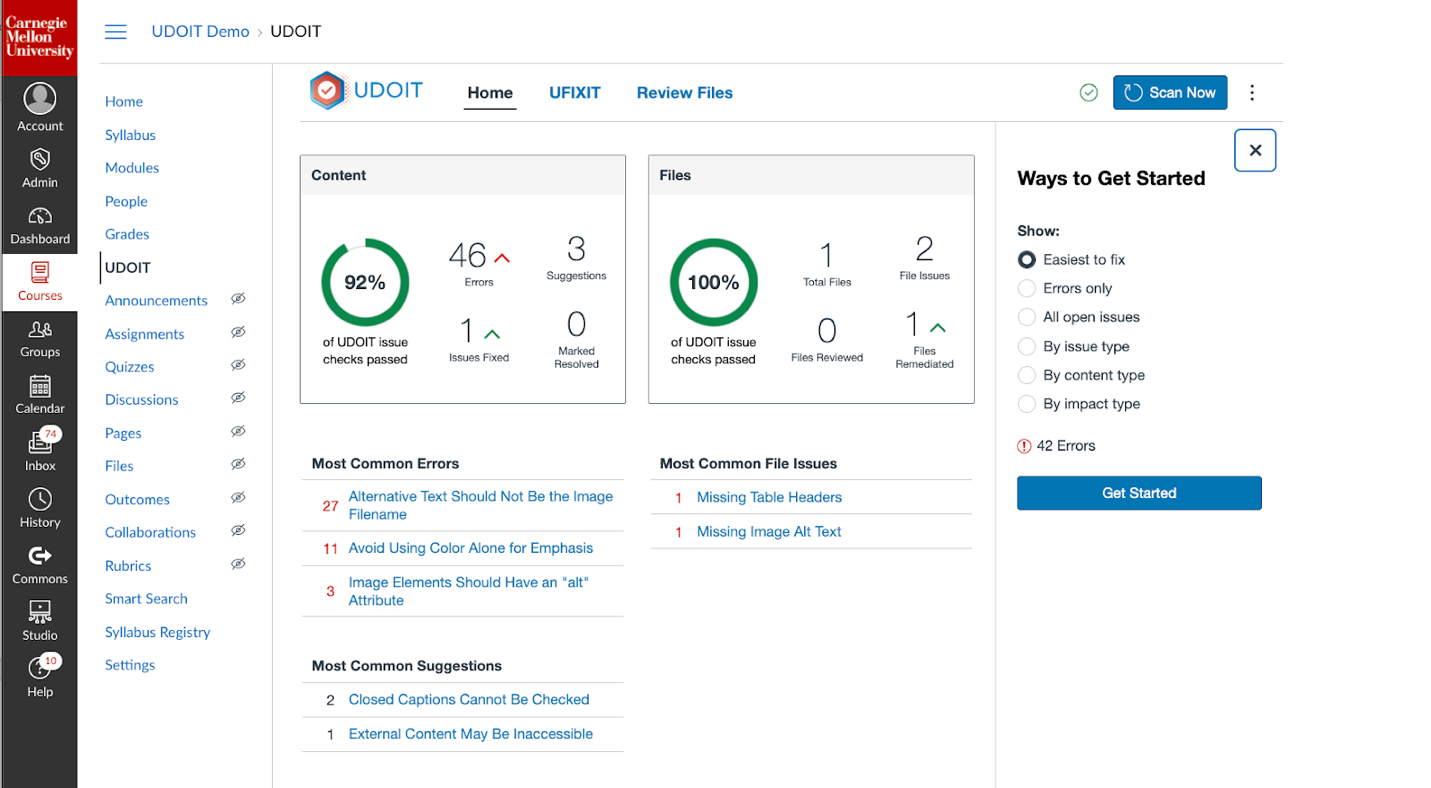
UFIXIT Tab
This is a drill-down view of the list of items with issues to review and fix. Many fixes can be done without leaving the UDOIT interface.
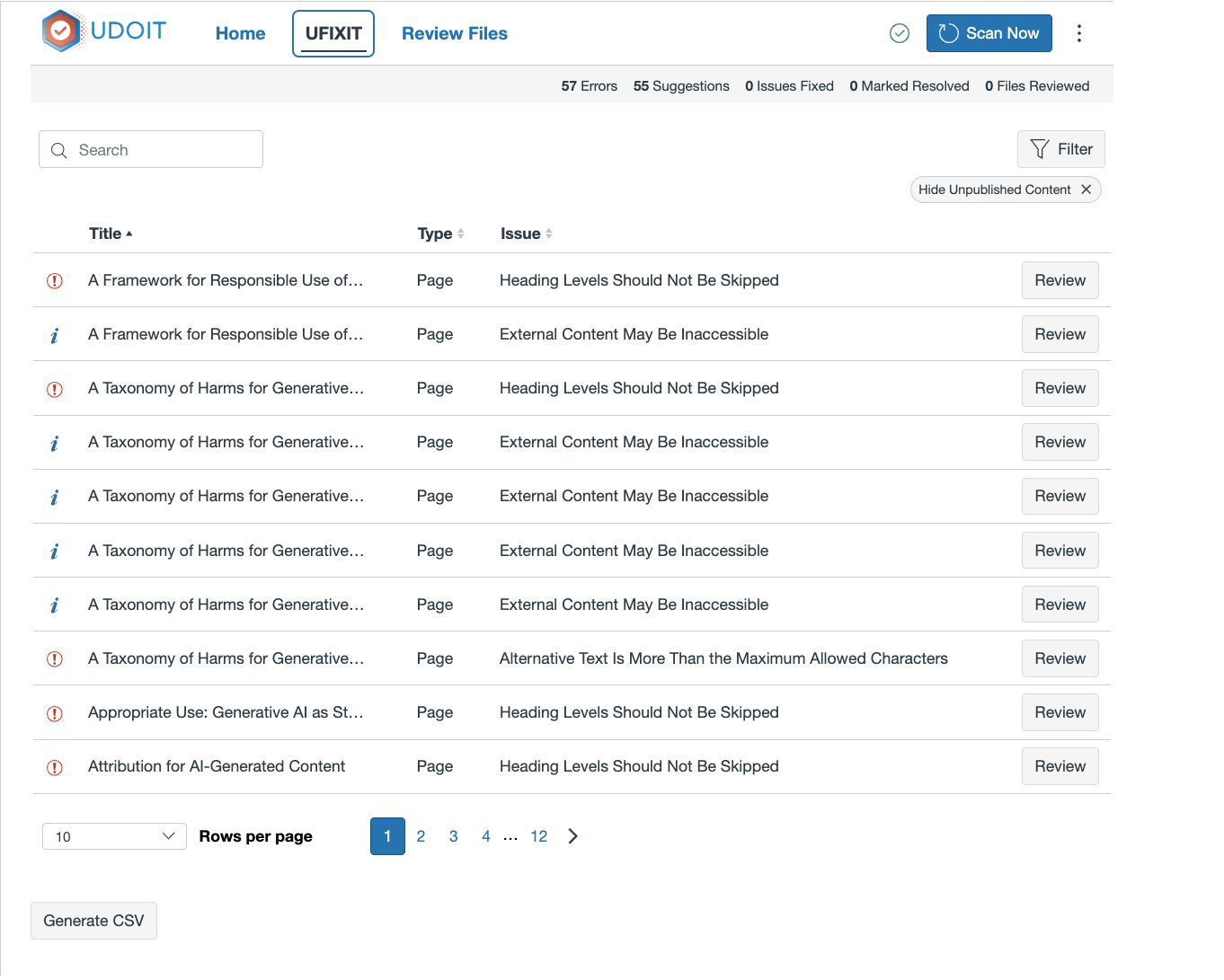
Review Files Tab
This area lists your course files and signals the various issues. You can review, download the file, make your adjustments, and then finish by replacing the original file.
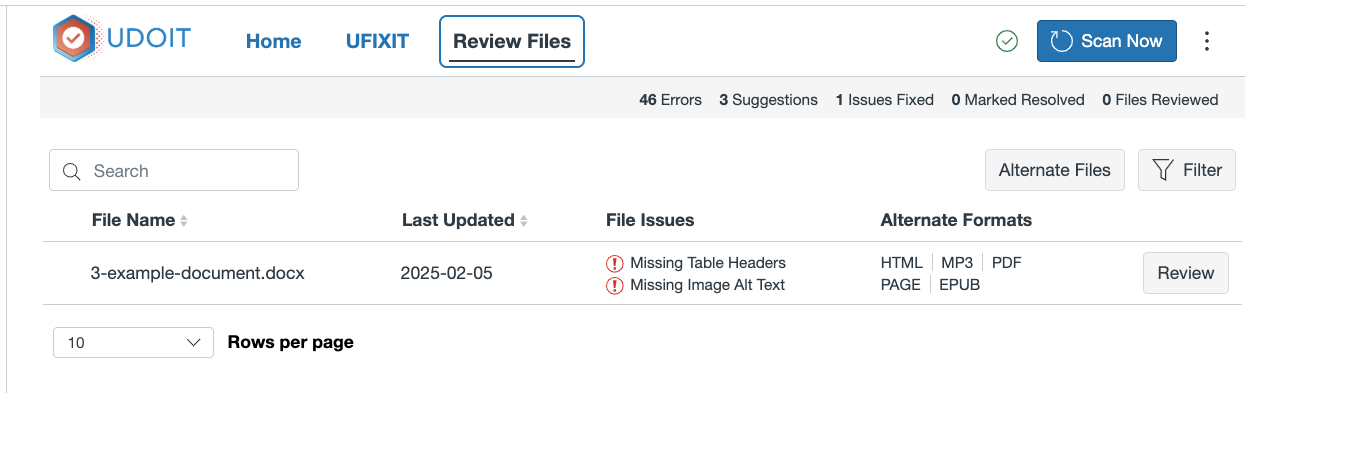
Creating alternative file formats (pdf, Canvas page, audio, etc)
Providing multiple file formats for course materials ensures accessibility for all students by accommodating diverse needs, preferences, and assistive technologies. Some students rely on screen readers, Braille displays, or text-to-speech tools, which may work better with specific formats. Others benefit from customizable text sizes, high contrast options, or simplified layouts for cognitive accessibility.
UDOIT can help by converting your existing documents into the following formats: Canvas Page (includes HTML file), standalone HTML file, ePub digital book, plain text, audio file (MP3), or auto-tagged PDF.To create alternate file formats:
- Upload original documents to your course using the Files navigation item. (Skip this step if your files have already been uploaded.)
- Go to the Review Files tab within UDOIT.
- Click Scan Now to refresh the document list if you do not see your file listed.
- Click Review.
- Under the heading Alternate Formats, you can request the additional file types you would like.
Efficiency Tips
Making your content accessible does not have to be overwhelming, and small improvements can make a big difference for your learners/students.
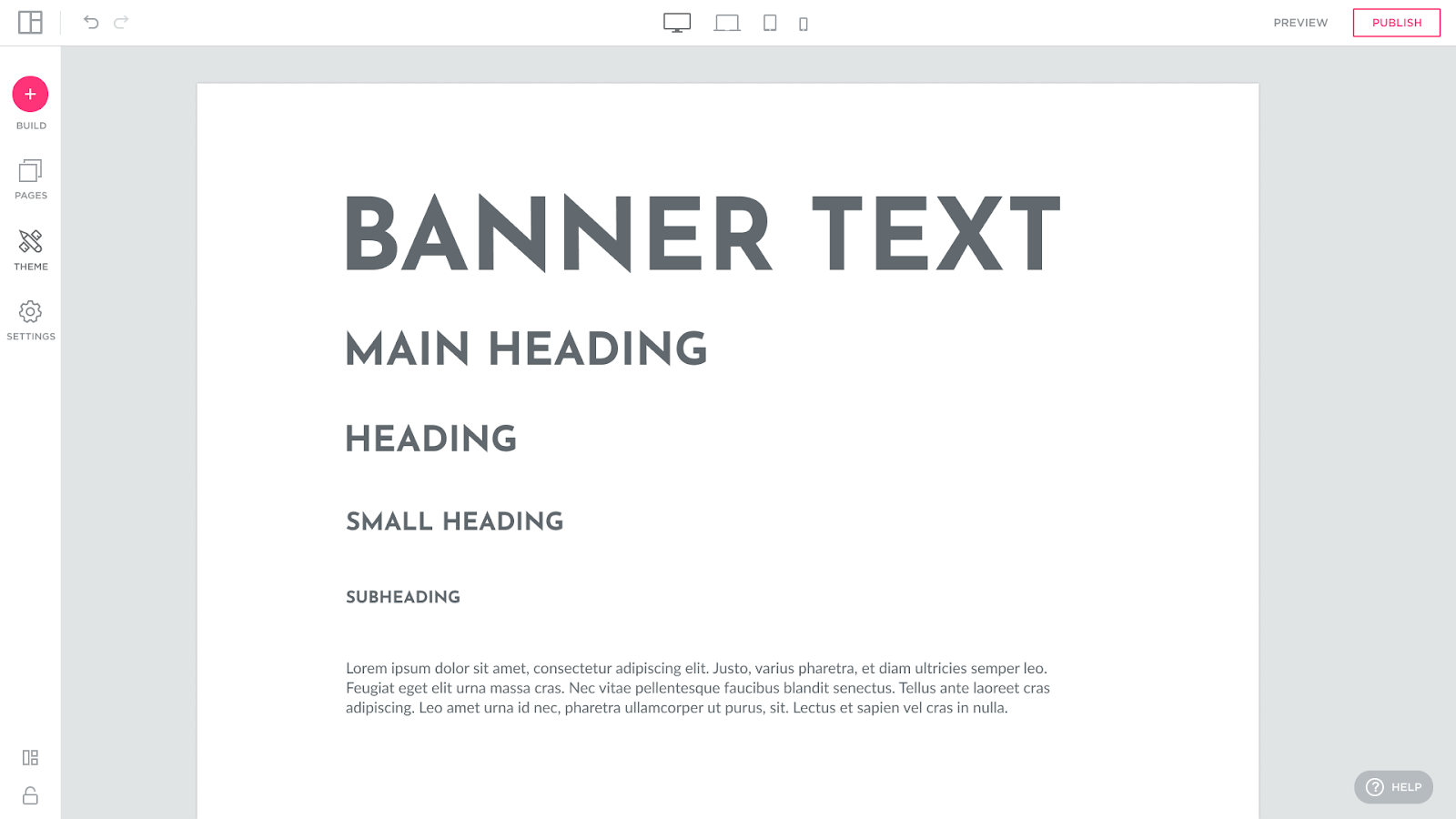
- Start with the easiest, high-impact fixes
Regularly using UDOIT and starting with the Easiest to Fix issues (e.g., using a document hierarchical structure; adding descriptive text to images; writing meaningful text for links that tells the person what is behind the link they are going to; removing decorative/extraneous images - also good for learning) can help to streamline the process of making your course content more accessible over time. - Use UDOIT’s UFIXIT tab to see and sort the list of issues to group and sequentially fix similar issues.
- Do it in smaller time sequences – address a few fixes each time you update your course.
- Prioritize key student interactions—focus first on the pages students will use most or that are most high-stakes for their learning.
- Build it into new content - create accessible content right from the start.
a. Add alternative text when uploading an image.
b. Use real headings instead of bolded text for section titles.
c. Write clear, meaningful link text instead of "Click here."
For more tips, visit Digital Accessibility Best Practices